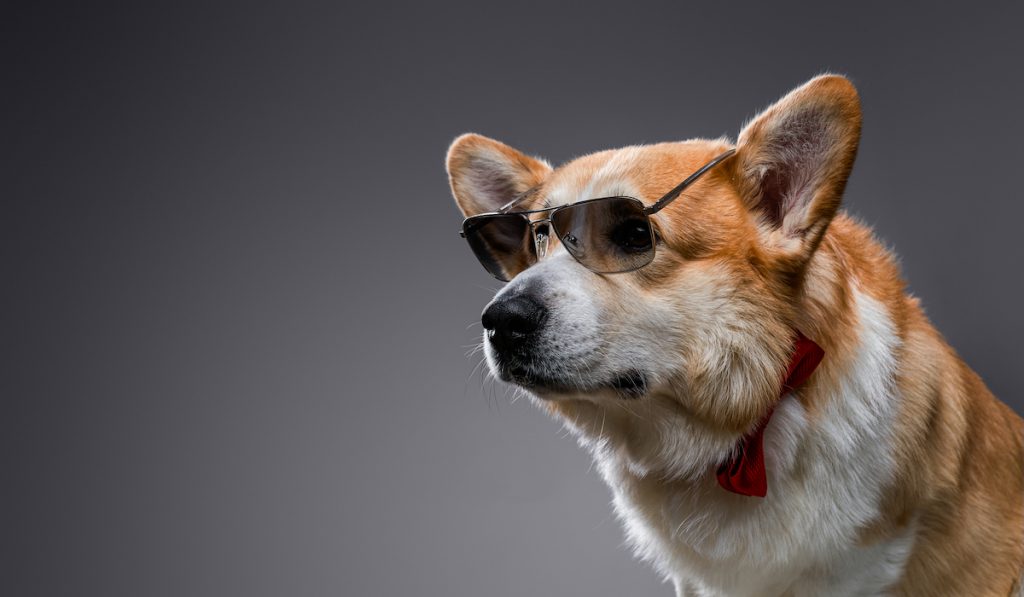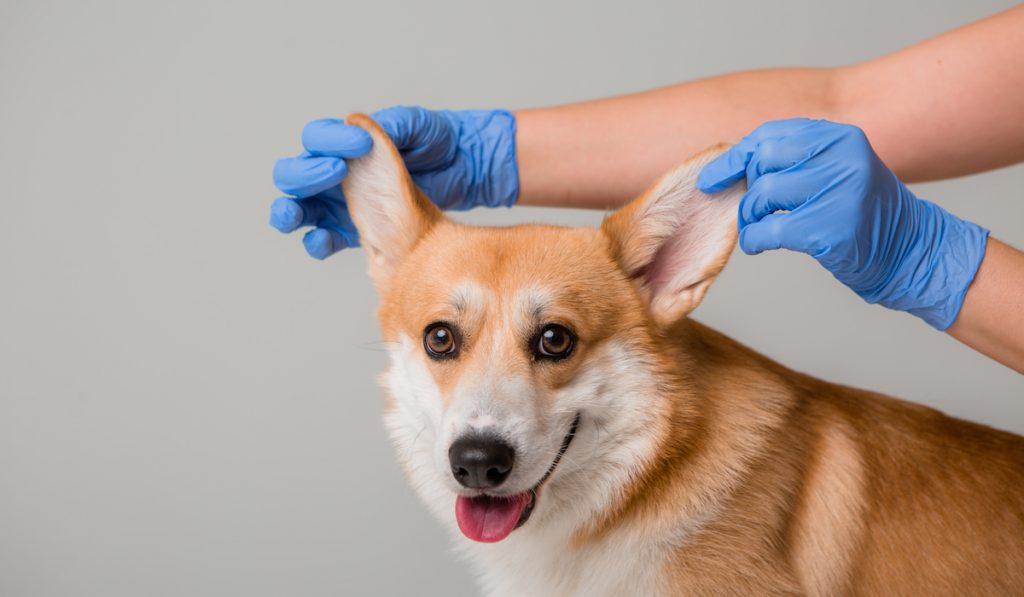Corgis are one of the most absolutely adorable dog breeds you will ever come across and part of their charm is their pointy, oversized ears.
The question is, however, do their ears stand up on their own or are they floppy?
Corgis ears do stand up naturally in their own time. Each corgi is different and the time it takes for their ears to stand up can be longer than expected. Corgis have floppy ears when they are puppies, however, eventually their ears will stand up unless they have been injured.
It is not out of the ordinary for corgi puppies to have floppy ears for months, but it can be concerning for dog owners. Learning about corgis and their simply lovable ears is vital for understanding why their ears are floppy and when they should finally stand up.
Why Do Corgi Puppies Have Floppy Ears?
Corgis are born with small, round-tip, floppy ears because they do not have any cartilage in their ears to help them stand. They also lack any muscles in their ears that would help them to stand up on their own.
Having floppy ears is actually beneficial for corgi puppies while they are still in their mother’s womb because space is limited. Their lack of ear cartilage as puppies helps their ears stay safe while they are bunched together in the womb.
It also helps make the birthing process much smoother and protects the mother as well.

How Do Corgi’s Ears Stand Up?
A corgi’s ears are able to stand up once the dog has grown sufficient cartilage in their ears and their ear muscles are developed enough to hold their ears up.
Their ears will begin to stand up as their ear muscles gain strength and are able to hold them up for longer and longer amounts of time. Muscle development is just as important as cartilage development in a corgi’s ear.
Both of these processes can take time and can vary dog to dog.
When Will My Corgi’s Ear Stand Up Naturally?
A corgi’s ears will stand up naturally when their ears have developed both the cartilage and the muscles they need. Many corgi owners will see their puppies ears begin to stand up starting around eight weeks old.
Not all corgi’s ears will start to stand up at eight weeks old and it could even take months. There are some corgis whose ears do not stand up until they are one year old.
If your corgi’s ears take longer than normal to stand up, do not worry. Each corgi has its own path to follow when it comes to their ears and their ears should stand up in time.

Why Does Only One of My Corgi’s Ears Stand Up?
If only one of your corgi’s ears is standing up, do not panic. If your dog is still young, its other ear should eventually stand up. Often, one ear on a corgi will stand up before the other one. This is normal and should not cause you any concern.
As a corgi’s ears stand up, they will progressively begin to stand up from the bottom up. This can cause one or both of their ears to still appear floppy, but really they are starting to stand on their own.
Why Does My Adult Corgi Still Have Floppy Ears?
While the majority of corgis have ears that stand up naturally, there are a few that end up with floppy ears as adults. This is a rather rare occurrence, but it is no cause for concern nor is it an indication of poor health.
Injuries, genetic predisposition, and mixed breeding can all be reasons why your corgi’s ears stay floppy. The only way to know exactly why your corgi’s ears never stand up is to consult your veterinarian.
A genetic test can be done to see if your corgi is a full-blooded corgi. You can also contact your corgi’s breeder to see if any of its siblings or parents had floppy ears, which would point towards a genetic predisposition.

Should I Tape My Corgi’s Ears to Make Them Stand Up?
While some dog owners resort to taping their corgi’s ears up with tape to help them stand, it is not recommended. Ear taping can cause rashes, allergic reactions, hair loss, and injury to a dog’s ear.
If a corgi’s ears are meant to stand up, they will stand up on their own without any interference. They do not have to be forced and it is easier on all parties to just let it happen naturally.
Just give it time and talk to your veterinarian if you have any cause for concern. Remember, a few corgis will have ears that never stand up and trying to force them with tape will not change that.

3 Ways To Help Your Corgi’s Ears Stand Up Naturally
There are a few ways that your can help your corgi’s ears stand up naturally without resorting to taping them.
1. Make sure your corgi is getting the nutrients it needs – Corgis need to eat quality, nutrient-filled foods to stay healthy. This, in turn, will help their ears stand up naturally because they are getting all the necessary nutrients to build cartilage and muscles.
2. Keep your corgi’s ears clean and healthy – If you keep your corgi’s ears clean and healthy, you will also be helping them stand up naturally. Ears that are free of infection and injury will stand up more easily than those that are not.
3. Have a veterinarian do regular health checks – Make sure you take your corgi to all its regular vet health checks. You veterinarian will be able to detect and treat any malnutrition issues or ear problems that could cause your corgi’s ears to take longer to stand up.

Are Corgis Ever Born With Ears That Stand Up?
Corgi’s are never born with ears that are already standing up. They do not have the necessary ear muscles or the cartilage their ears need to stand up.
If anyone ever tells you that their corgi’s ears stood up as soon as they were born, do not put much stock in it. Your corgi’s ears will more than likely stand up over time.
Final Thoughts
Corgis are simply adorable and their ears are just icing on the cake. Almost all corgis will have ears that stand up eventually, although some will take longer than others.
Just give it time, make sure your corgi is eating healthy, nutrient-filled food, and your corgi’s ears will stand up naturally.
In the rare occurrence that your corgi’s ears never stand up, consider yourself lucky because you still have a unique and utterly adorable corgi in your life.
Resources:
Researching information about corgis and their ears really taught me a lot about this unique dog breed. Here are the sources that I used for this article.
